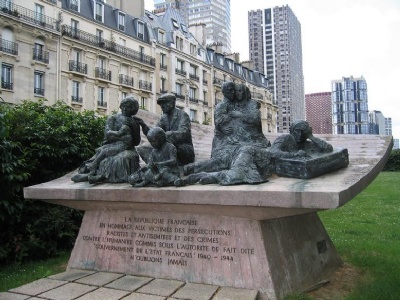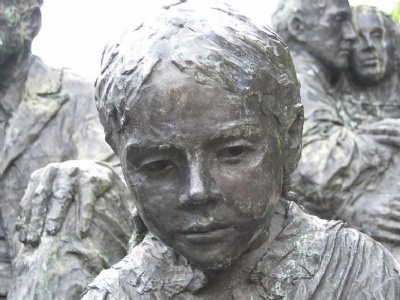Vélodrome d’Hiver
Since the German occupation, Jews from other countries who had fled to France before the occupation was detained in assembly camps around France. Not only in the occupied part of France but also in the German-friendly Vichy regime who fully cooperated with the Germans. French Jews had in the autumn of 1940 been subjected to laws restricting their social, legal and economic rights. In 1942, Jewish persecution was radicalized and the Nazis demanded that all Jews in France, regardless of national affiliation, be handed over to the germans and deported eastward. Therefore, extensive round-ups were carried out where Jews were arrested and put in assembly camps. On July 16 and 17, 1942, the largest single round-up was carried out when about 13,000 Jews were arrested by french authorities. More than 4,000 of these were children, although the Gestapo had not requested that.
The goal was to arrest about 28,000 Jews in and around Paris, but rumors of the upcoming round-up had spread and thousands, mostly men, had fled. The round-up was a collaboration based on common interests between the French police chief, Rene Bousquet, and France’s supreme SS and police chief, Carl Oberg. The arrests were carried out by some 7,000 members of the French police, gendarmes and members of fascist organizations. The Jews were interned in the camp of Drancy but the majority, about 8200, were interned in the Velodrome d’hiver near the Eiffel Tower. This was a sports facility primarily for cycling that had not been prepared at all to house such large crowds and the conditions were therefore disastrous. Some were detained for up to five days before being transported on to the transit camps of Drancy, Beaune-la-Rolande and Pithiviers. They were later deported to Auschwitz. Velodrome d’hiver was demolished in 1959.
Current status: Demolished with monument (2007).
Location: 48°51'12.77" N 02°17'13.95" E
Get there: Metro to Bir-Hakeim Station.
Follow up in books: Weisberg, Richard H: Vichy Law and the Holocaust in France (1998).


In 1995, French President Jacques Chirac recognised the role of the French state and, above all, the French police active role in the Holocaust. The Monument is one of the strongest I have seen and the facial expressions in some of the sculptures are strikingly real and touching.